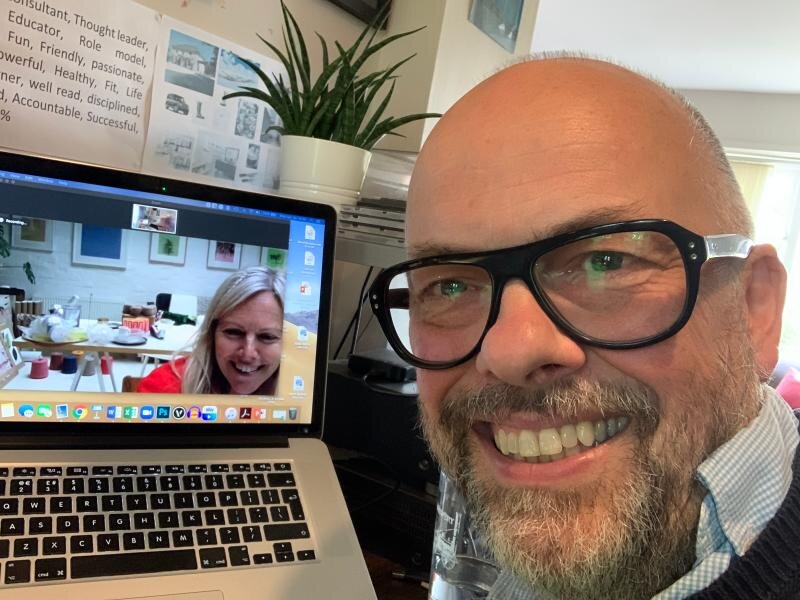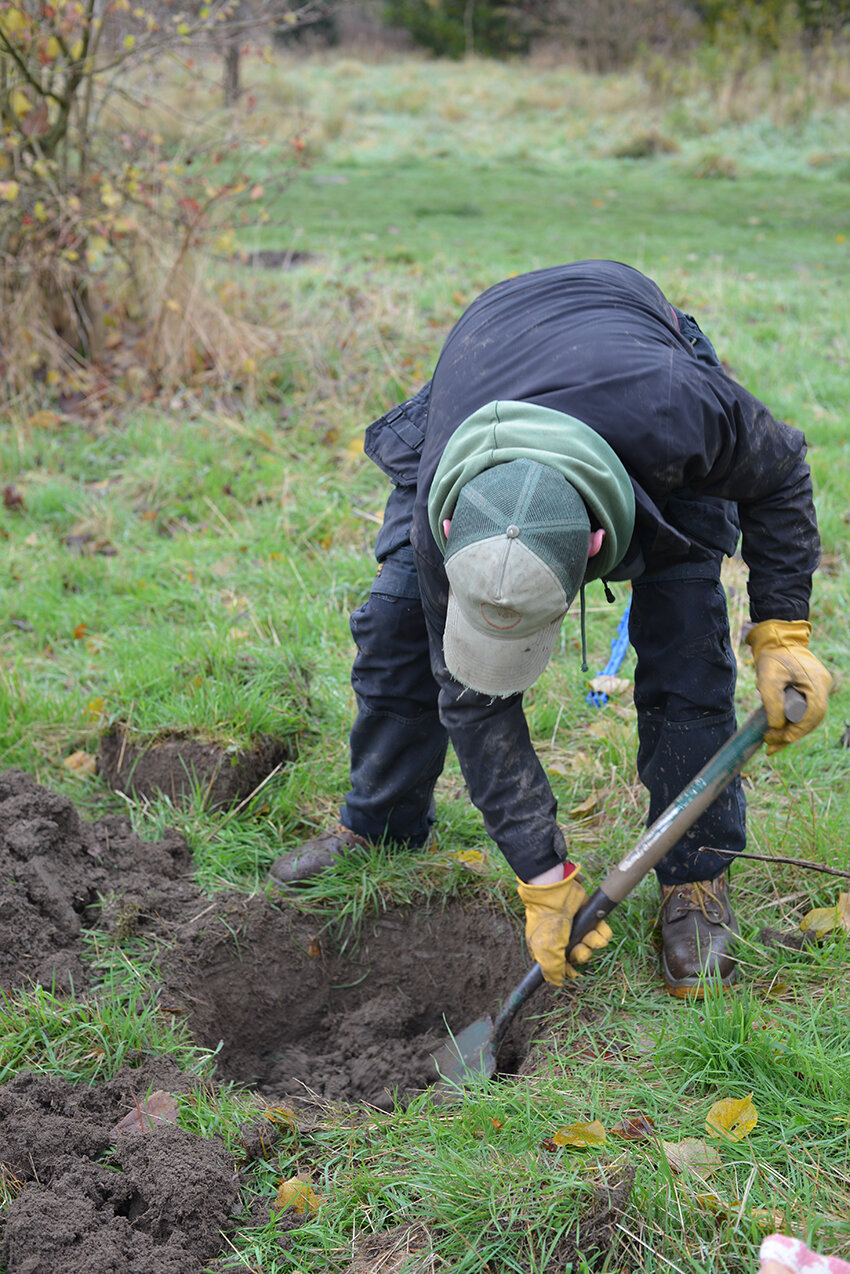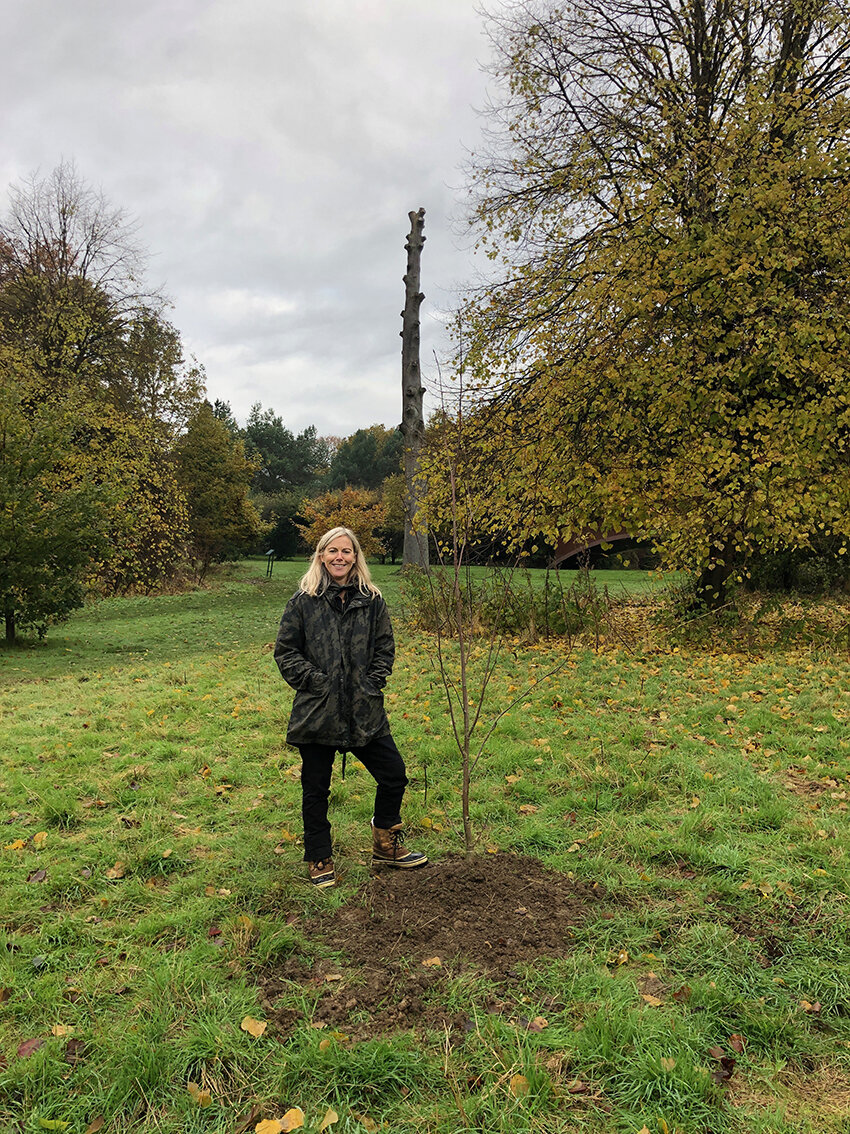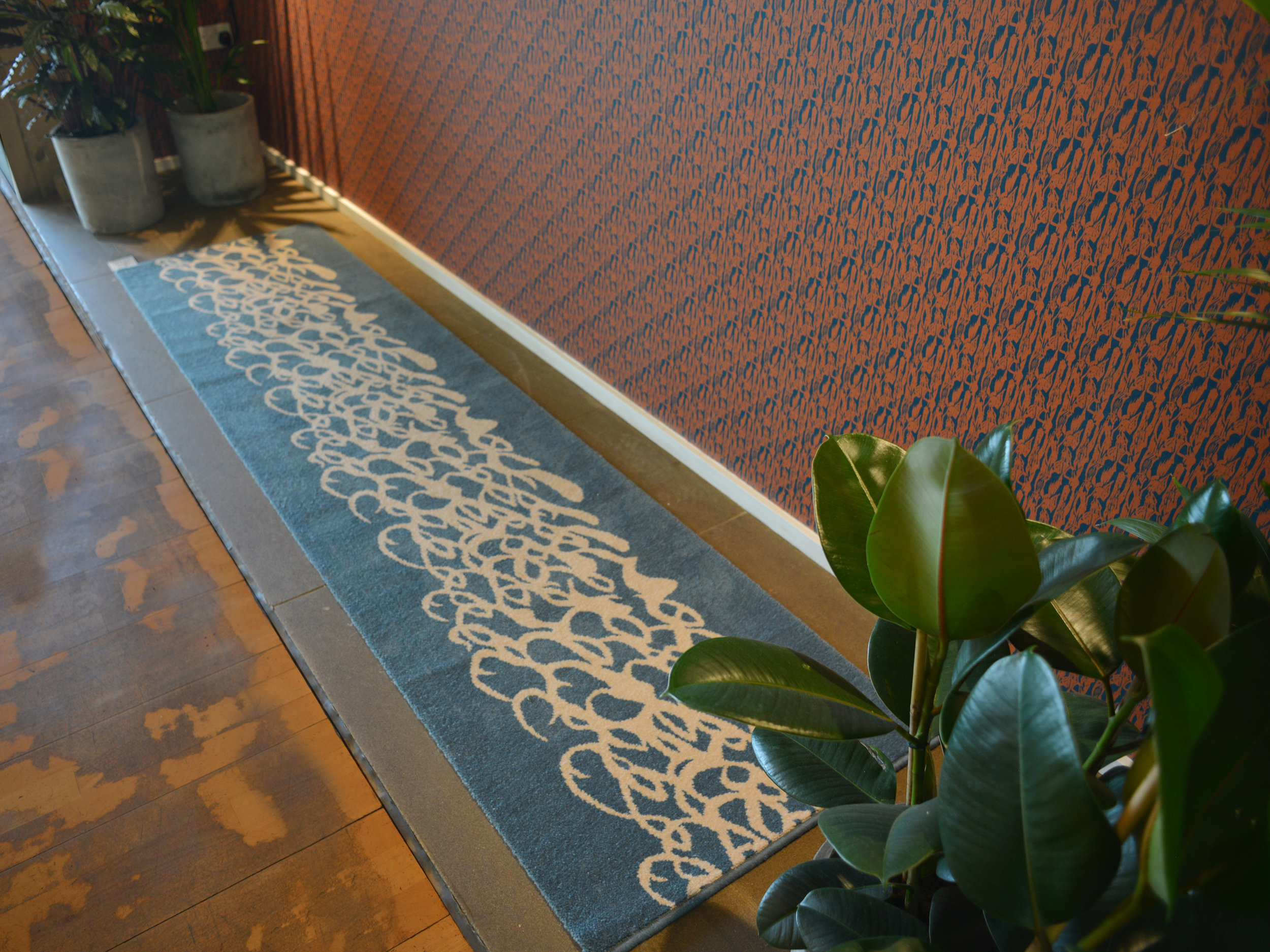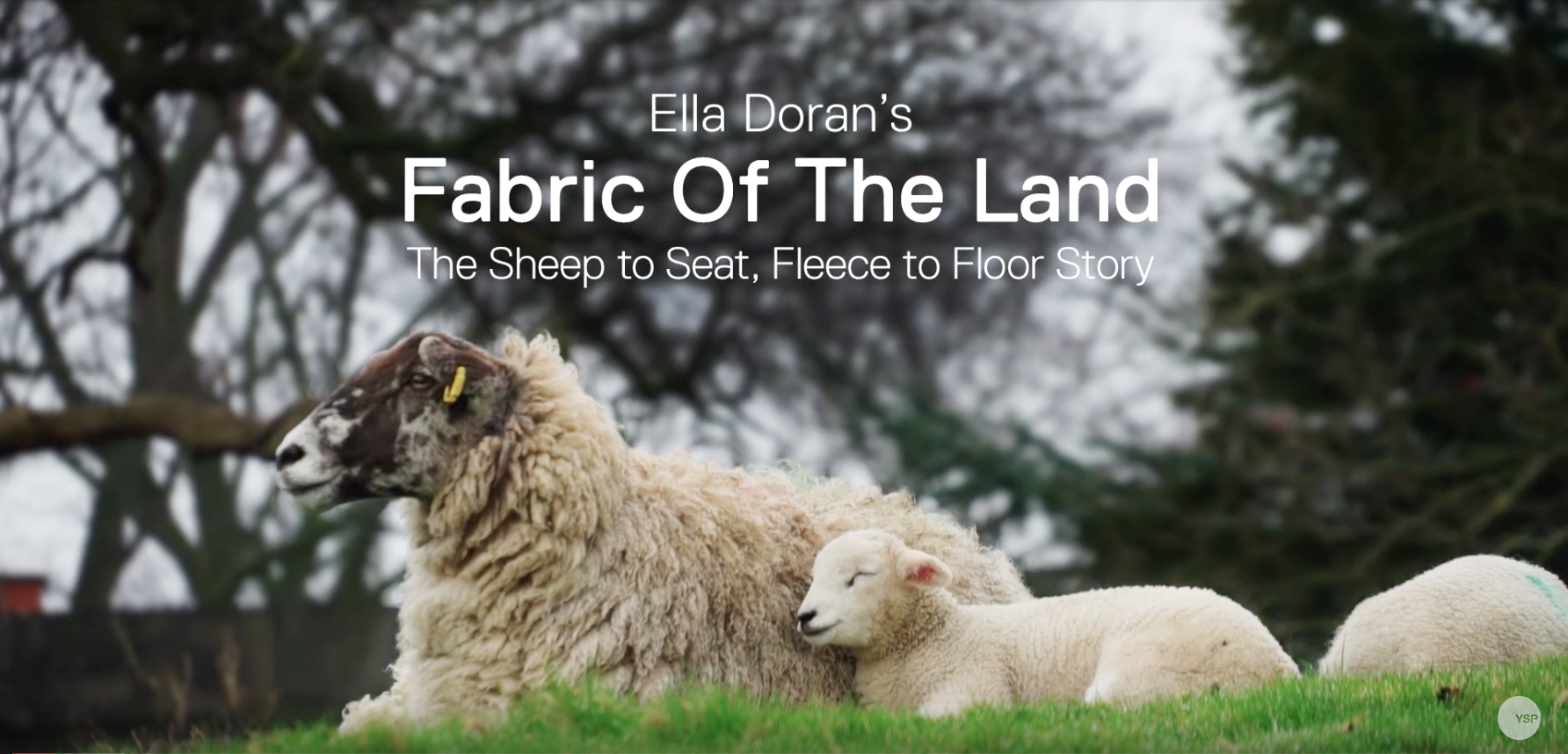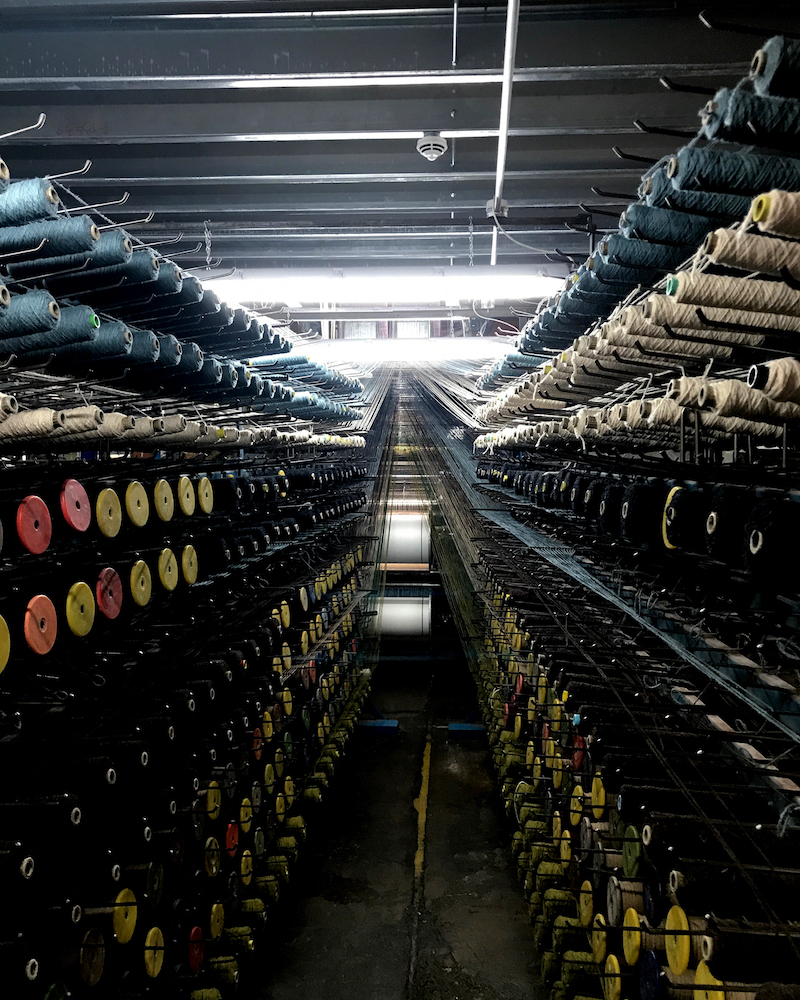Alongside Camira Fabrics, a company who specialises in bespoke fabric manufacture, and through much trial and error of hand and machine, jacquard weaving facilitated Doran in transferring the colours and tessellations of Sheep to Seat’s signature design ‘Waterlake’ from her paperbound sketches onto the woollen cloth that constitutes the exhibition’s floor runner, wall hangings and chairs. The variation in colour tones is barely perceptible amid the cyclical, repetitive loops of Doran’s design. Inspired by ducks paddling through YSP’s lake, ‘Waterlake’ mirrors their movement, rippling throughout the exhibition across wall tapestries, floor runner, stools, seats, and screen-prints, its infinite cycles and nature bound aesthetic resonating a circular system that pays homage to the environment in which it is rooted.
Following Doran on the YSP podium at Sheep to Seat’s opening event is Campaign for Wool’s chairman, Peter Ackroyd, who has worked closely with the collaboration, advising and signposting.
“Lots of people talk about being sustainable,” he announces, “but fall short of actually achieving it. Ella has truly done it.”
His words ring true in the contents of the exhibition. Mayor’s ‘kissing’ pentagon-shaped stools and seats sitting side-by-side at the centre of showroom are made entirely of the YSP land: oak and wool. This means they have no prescribed ‘end-of-life’ and if discarded, they will biodegrade to become part of the land again. The limited quantity of wool and storm-felled oak available from the Park meant that their production was limited to a handful, but this does not undermine the fact that their pentagonal structure means they could, like the ‘Waterlake’ print, tessellate forever, embodying Doran’s cyclical philosophy.
“If you put five boffins in a room overnight,” claims Ackroyd, “they could not invent a material as scientifically sound and sustainable as wool. It’s fire retardant, it absorbs volatile compounds and it biodegrades.”
Sheep to Seat/Fleece to Floorpresents no large-scale answer to a global climate crisis. Wool, though heralded as the ultimate sustainable material, comes with its own environmental demands. But the exhibition does offer a glimpse into its potential in the UK’s sustainable future, and how we as land workers, designers, manufactures, retailers and consumers can change the way we approach and use our resources.
On the first open day of the exhibition, a little boy and his grandfather pore over Doran’s miniature tapestries. The boy, marvelling at the variety of their textures, asks if this one is made from the same thing as that. His grandfather explains the material and the weaving techniques that made the tapestries, the chairs, the boy’s jumper. The scene is Doran’s vision come to life: to inspire appreciation, to re-engage the consumer with the local and environmental stories behind the material, and to reconnect the human threads that quietly stitch together the fabrics of our lives.
Alessandra McAllister is a freelance writer focusing on a range of topics from arts and culture to mental health. She has written for Culture Trip, Refinery29, Feature Shoot and Open Democracy. Currently, she lives in Bristol, UK where she designs and teaches writing for wellbeing courses for mental health charity Second Step. She is content coordinator of the Bristol Wellbeing College blog and is currently working on her first novel No Borders Bar, following five years of research, working closely with an Iraqi refugee and his family. Her most recent article can be found here.

